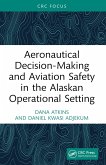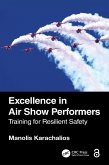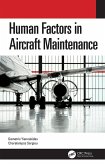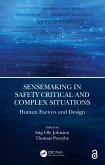Through a unique blend of meticulous case study analysis and semi-structured interviews with Alaskan pilots, this book offers a comprehensive understanding of the proverbial challenges of flying in Alaska. It uncovers the human factors elements specific to this environment, shedding light on the factors that influence a pilot's decision-making, which may contribute to the high rate of accidents in Alaska and other remote regions. The content is supported by historical and socioeconomic perspectives on remote-setting aviation operations. Global perspectives are discussed with narratives from one author's experiences flying to remote airstrips in Africa. The book concludes with practical recommendations to improve decision-making and aviation safety in these remote settings, making it a must-read for aviation professionals.
This insightful research is not just for academic consumption. It is a practical guide for aviation professionals, including pilots, dispatch teams, air traffic controllers, and aviation support personnel. It offers valuable insights into the human factors involved in flying in Alaska, which can be directly applied in other aviation resource-constrained geographical regions, making it an indispensable resource for those in the field.
Dieser Download kann aus rechtlichen Gründen nur mit Rechnungsadresse in A, B, BG, CY, CZ, D, DK, EW, E, FIN, F, GR, HR, H, IRL, I, LT, L, LR, M, NL, PL, P, R, S, SLO, SK ausgeliefert werden.









